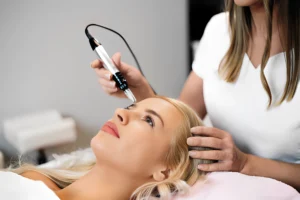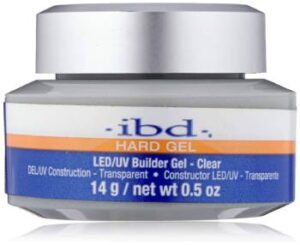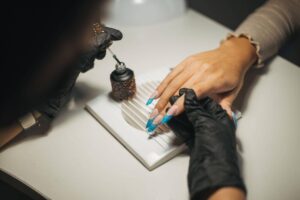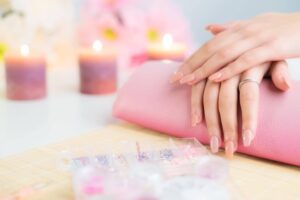Last Updated on 2 years ago by Nicky Johnson
Did you recently start a skincare regimen, and now you’re experiencing flaking, blackheads, whiteheads, cysts, papules, and pustules?
Take a deep breath and don’t panic. Odds are that what’s going on is not a breakout but rather a purge. Remember, before you start any new skin acne complex routine make sure you prep your skin.
Purging is a common reaction to skincare products that contain retinoids or exfoliating acids. When the chemicals are doing their work, they are breaking up layers of dead skin cells, excessive sebum, and pore buildup that forms pimples.
When all of this crud rises to the surface in response to the exfoliator or chemical peel, it’s going to look ugly, but hang in there, because the results are right around the corner. And getting upset could just lead to stress acne.
Here’s how to know if your new skincare is helping or hurting, and why you’re getting acne in the first place.
Why are my pores so big anyway?
Blog Contents
Inflammatory acne is a broad category that includes symptoms such as pimples, oily foreheads, chin acne, and clogged pores. This happens when excessive oil, known as sebum and excreted by sebaceous glands under the skin gets mixed with debris such as dirt or dead skin cells and clogs up a pore.
White blood cells get sent to the rescue in order to clear the blockage and this can cause inflammation. The result is red, swollen, and pus-filled pimples or pores that are larger than normal.
What is the best acne treatment for my breakouts?
When ingredients such as a salicylic acid cleanser or retinol for acne work on your skin, they don’t force out the bacteria already in your pores, but instead, increase the turnover of dead skin
Cells, which oftentimes results in inflamed skin. Ultimately, a purge will remove the inflammatory agents that are causing acne in the first place and clears the way for skin to stay healthy and free of blemishes.
Many people ditch their retinoid or exfoliation regimen when they start to experience these awful-sounding symptoms, but it’s all part of a normal process. Resist the temptation to jump
ship once this process starts, it’s a situation of ‘getting worse before it gets better’ and you won’t regret enduring the trouble. Your skin will thank you for it!
How do I know if my clogged pores are a purge or a breakout?

While most commonly these symptoms are the result of a purge, it could also be a breakout, so how do you know?
The answer is patience. Purging happens when ingredients speed up the skin’s natural rate of shedding and renewal and should only require one skin-cycle to get through most of it.
Since everyone’s skin is different, the timeframe for this period varies, but most dermatologists recommend sticking with a new skincare regimen for four to six weeks.
If the symptoms last longer than six weeks then consult a dermatologist acne specialist, the dosage or frequency of your regimen may need adjustment.
Another thing to watch out for if you’re not sure whether it’s a breakout or a purge is to know what ingredients are in the product being used. If it contains retinol for acne, exfoliating acids or benzoyl peroxide, then it’s probably a purge.
But if the skin is reacting to an agent meant to hydrate, such as an oil, makeup or sunscreen, then it’s probably a breakout caused by comedogenic ingredients.
Comedogenic ingredients are compounds that fill and clog pores, ensuring that dead cells and sebum get trapped underneath and form a nasty pimple, pustule, and all different types of acne.
How long does skin purging last?
While that amount of time may seem like forever while you’re waiting for the skin of your dreams to become reality, there really isn’t anything that can be done to change the timeline.
The best advice is to avoid picking and squeezing any offending pimples or trying to remove blackheads that arise during this process, as doing so could lead to scarring, prolonging your wait for perfect skin.
Don’t give up hope yet though, you may not be able to speed up the purging process, but there are steps you can take to make it more tolerable.
Avoid products that dry the skin such as those which contain alcohol and slow down the number of exfoliating acids such as salicylic acid cleansers that you apply to regions which are actively purging.
Also resist the temptation to get a facial as it may be more than your face can handle. A good acne treatment cream can help as well, because it hydrates the skin, and can help prevent acne breakouts.
If you’re considering adding a peel, acid, or retinol for acne to your routine but are worried about potential side effects, then you can try and dodge the nasty purge cycle by easing into it.
Start by applying your retinoid twice a week and work up to daily use over time. This can allow your skin to adjust gradually to the new ingredient. For exfoliating acids, start at a pace of once per week and work your way up to using it three times a week.
This method doesn’t apply to chemical peels though, and those must be used sparingly, once a month at the most.
As unpleasant and annoying as the process of purging can be, you’ll agree afterwards that it was worth it to adjust into a new acne system routine.







